
Final Factory was provided by Never Games Limited for review. Thank you!
This game was tested with a Steam Deck LCD. OLED testing is coming soon.
Final Factory is an interesting game. The closest thing I can relate it to is Factorio, but in space, with a fair few differences. The game aims to build up a factory to automate production processes, and just like Factorio, this can get incredibly complex and require lots of planning and reworking as you progress. There are parts I like about how the game handles certain aspects and parts that could be improved upon, so let's dive into the review of Final Factory!
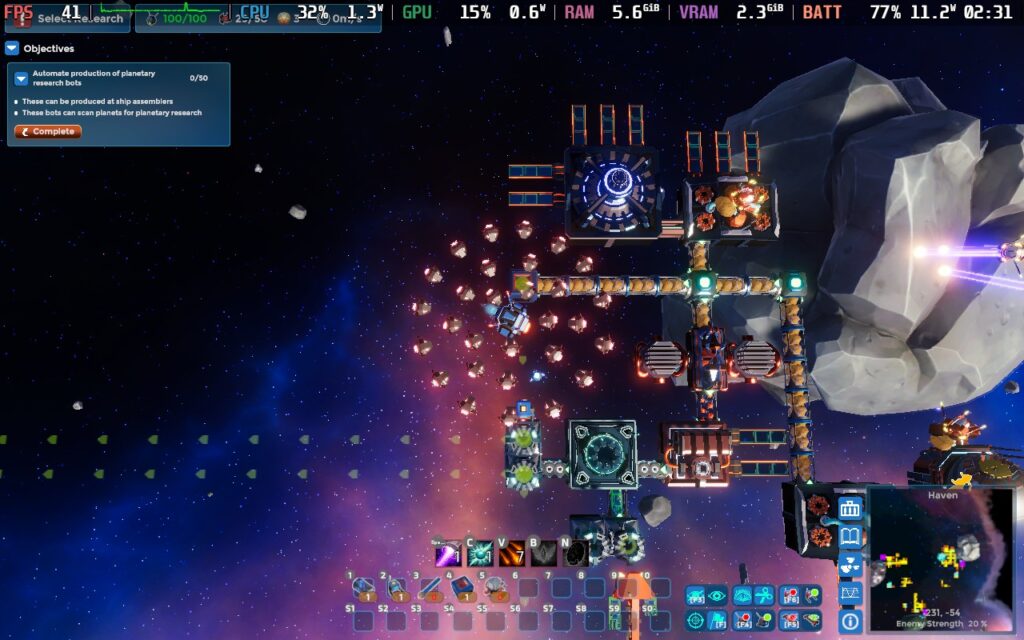
Much like Factorio, you start Final Factory with... well, basically nothing. You're just a lonesome ship floating in space with a couple of fighter drones for some basic protection.
Drones do most things in Final Factory, and you'll utilize them for fighting, logistics, mining, and research. Fighting drones will man defense platforms or can be pulled into your fleet and follow around the main ship, while logistics drones come in a few varieties. Still, they all perform the same duty: moving items from one station to another. Stations you build require stability, power, and heat venting. This makes it more difficult to make one large station to handle your needs, so setting up logistics drones to carry items between stations is necessary.
Mining drones are simple. They mine nearby asteroids for a time and then despawn, requiring you to build more. Research drones also work identically, using an asteroid or planet for some research before despawning. Because they only last a short time, automating the production of mining and research drones is a must.
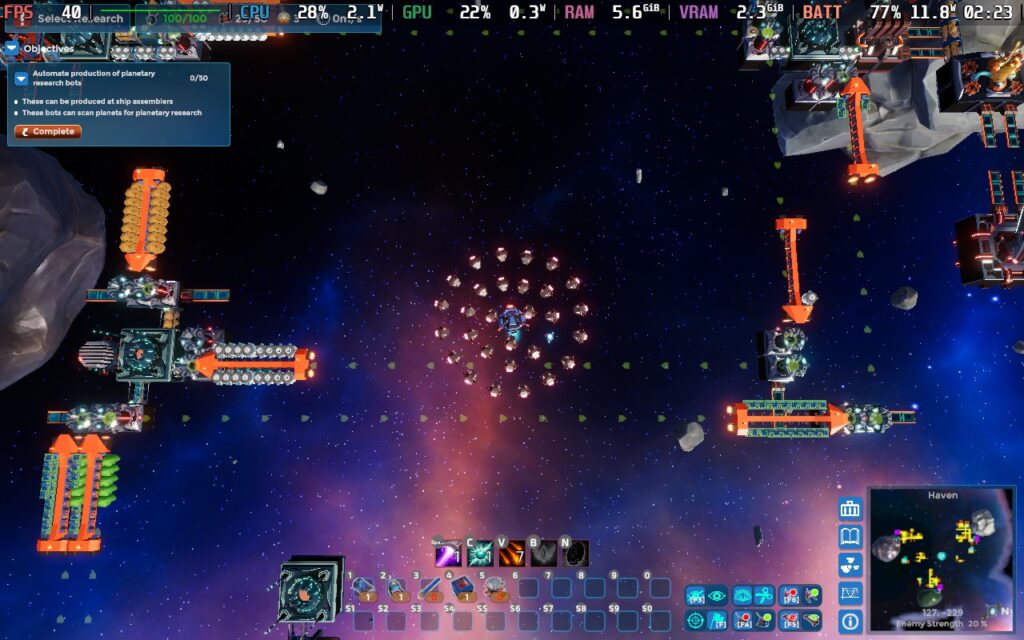
I do quite enjoy the way stations are handled. Like I said before, they have needs, meaning building a station is like a puzzle. You need to plan where every aspect of the station is situated, where the solar panels will be, where the cargo holds, and where the logistics hubs will be for logistics drones to take/deposit resources. Logistics drones are that they only move in a straight line, meaning you have to build your stations in a sort of "grid" of your own, making for it all to flow smoothly.
I'll admit that games like Final Factory can sometimes be a bit overwhelming for me once the tutorial ends after the first hour. The game gives you goals to aim for so you have some direction, but they can be lengthy and vague, such as "automate the production of planetary research bots." This was a several-step process requiring multiple production buildings and a bit of a logistics headache to ensure they all had the resources they needed.
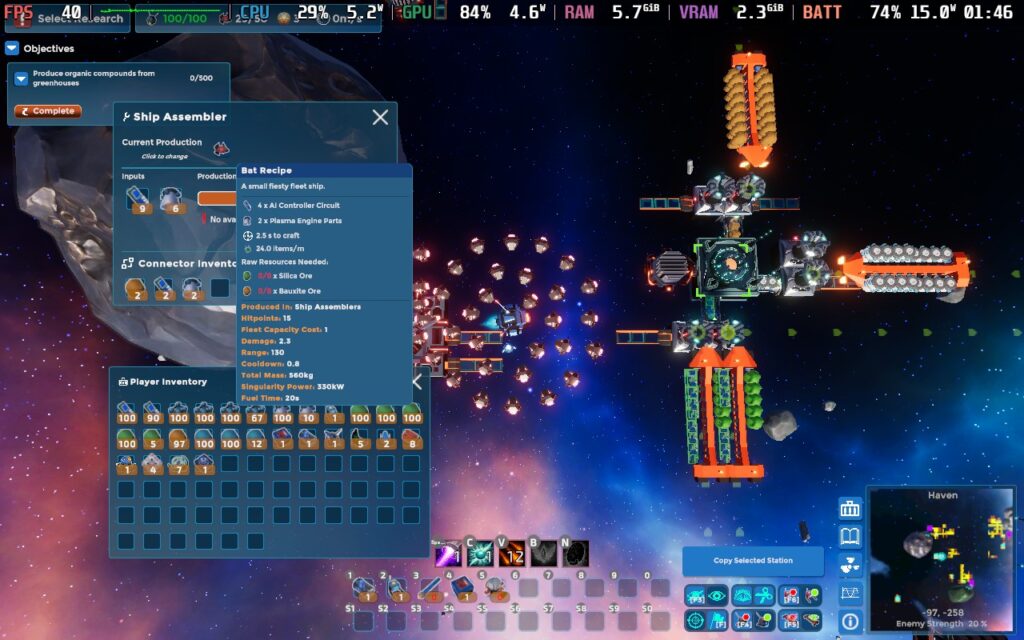
I feel the building and logistics side of things is pretty solid. It does get complicated, to the point where I feel like you need to dedicate some serious time to organizing your stations or at least read up on some third-party tutorials or guides before diving too far in, but whether that's a bad thing or not depends on what you want out of Final Factory, I guess.
If you aren't prepared to spend a decent chunk of time figuring out logic problems in your head about how to get resources between stations with the straight-line logistics drones and limited space you have to work with, Final Factory might not be for you. Eventually, you will have a headache and probably have to demolish parts of your stations and rework them to expand.
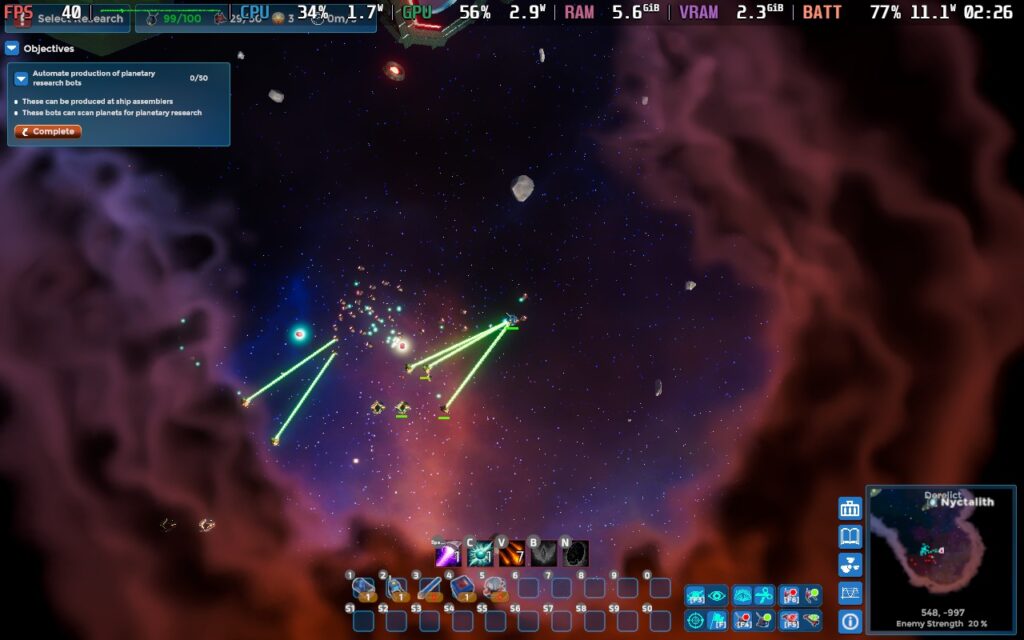
Combat-wise, I wasn't sure what to expect from the game. When first booting, I wasn't sure that the game had combat, but it doesn't take long for you to run into your first enemy. The combat is fairly basic. As you might expect from a game about automation, your fighter drones will do most of the fighting with you. You can research better drones and better fleet tech, allowing you to have more drones with you, but they will essentially follow the player's ship and attack anything that gets close to you.
Enemy bases are mostly made up of fleets of enemy ships alongside spawners, which periodically spawn ships that can be destroyed. You do have some abilities you can use in your command ship, such as a fairly weak weapon that pales in comparison to the large number of drones you'll soon have and the ability to order your drones about a bit if you want them to be more focused in a particular place.
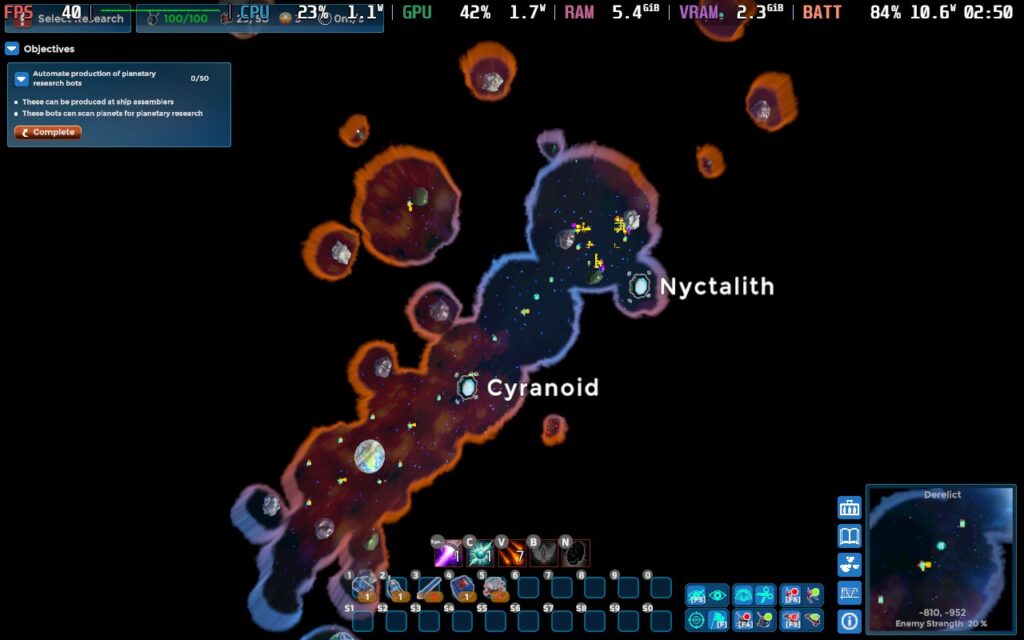
The world map has some interesting mechanics. Nearly all of the map is covered in the "fog of war." Interestingly, once you explore an area, if you don't maintain an active presence there with yourself or an exploration station, the fog will gradually reclaim the area, making you lose sight. This means you need to place defense platforms and exploration stations periodically so you can keep an eye on your empire. The enemies can also rebuild if you let the fog creep in.
Enemy strength also increases the further from the center of the map you get, going from 20% near the center to 300% at the edges of the map. They also seem to get more frequent. There's a little indicator at the bottom right that lets you know how strong the enemies are in your area.
Exploration is rewarded in the form of ancient alien structures, these can be star gates, which allow fast travel, or giant obelisks which can be activated in return for Lumin Orbs. These Orbs can be spent at another alien structure in return for upgrading the player's ship. I put all my orbs into increasing the player ship's speed, as I soon found traveling any long distance to be painfully slow, and as I said, upgrading health and weapons was a bit pointless, as I mostly let my drones fight for me.
Final Factory looks okay at first glance, with full support for 16:10 aspect ratio resolution, including the Deck's native 1280x800. Unfortunately, things do fall off a bit after that. There's no native controller support, so a community layout is needed to control the game. That does mean controlling things lacks some polish and is much slower than just using a keyboard and mouse.
The UI is also a bit of an issue. I don't often find this a problem, even on games where Valve's testing supposedly says it is, but Final Factory has a small UI, and while it does offer UI scaling, it just doesn't do the job very well. It only offers to scale up to 110%, and any scaling beyond 105% results in UI elements clipping inside each other. You can check out the comparison screenshot below to see 105% vs. 110% scaling and notice how the 110% causes UI elements to overlap, making it unpleasant to play with and look at.
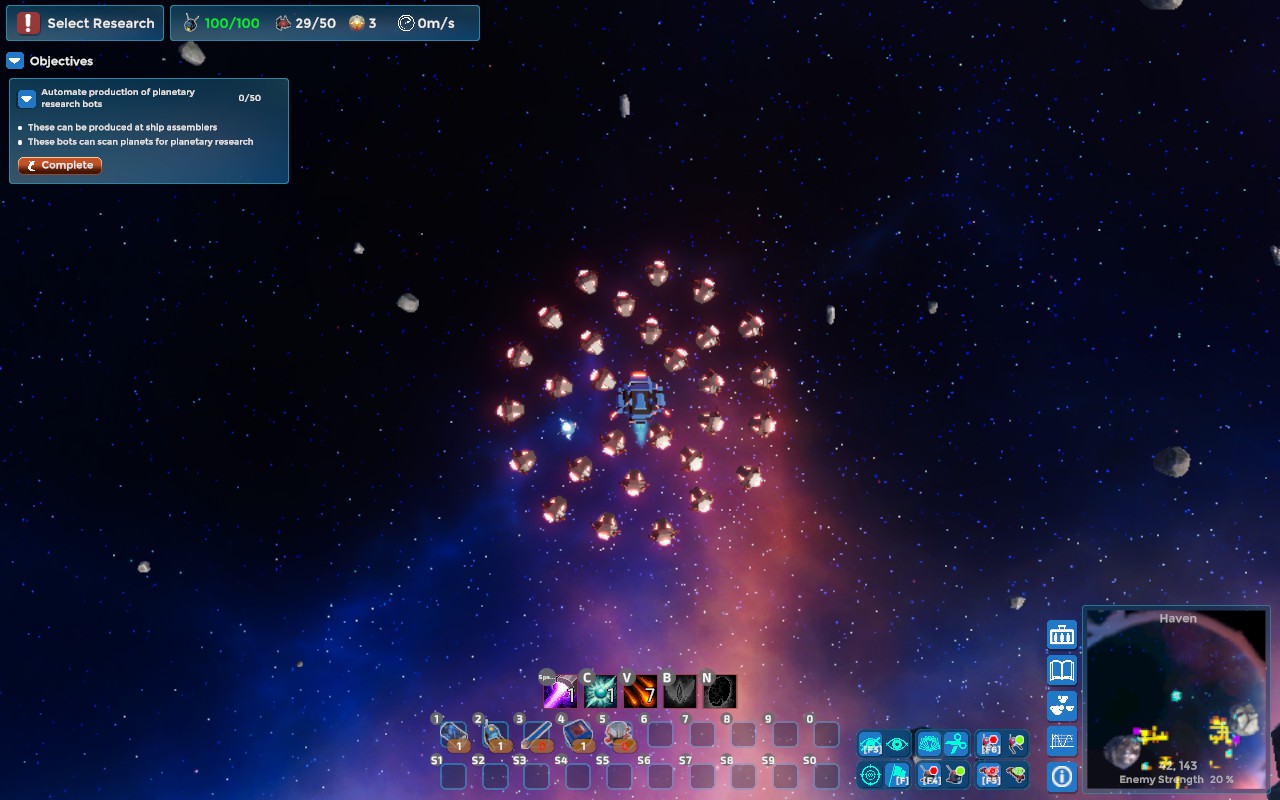
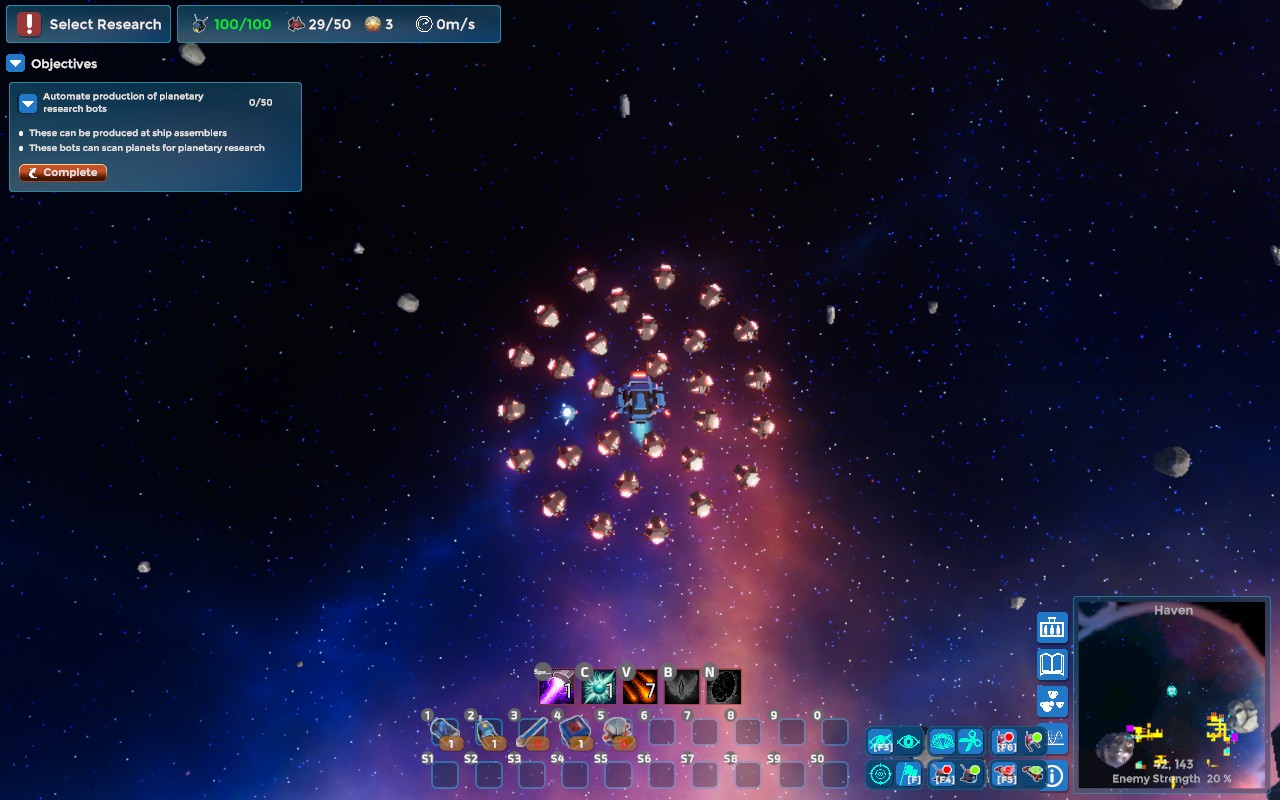
Ultimately, we'd need 120% or 125% scaling to make the text easy to read on the Deck and a fix for those UI elements merging. The recommended community controller layout does map a magnifier to L1 on the Steam Deck, so you can zoom in to text if need be, but it's far from ideal.
We also don't have many graphics settings for Final Factory; it is just a simple "Quality" option with Low, Medium, and High options. The main difference between the options seems to be shadow quality, and some Anti-Aliasing also comes into play. But I prefer the "Medium" option for my recommended settings. It clears up some of the aliasing on the edges of stations and offers some shadows, instead of Low, which has pretty bad aliasing and no shadows.
Final Factory is more CPU intensive than GPU, so we can afford some graphical quality without sacrificing much performance.
Note: Because of the sandbox nature of Final Factory, we can't account for every scenario in our testing. I didn't, for example, build a large factory covering the entire map, which would undoubtedly cause performance issues.
For Final Factory, we're locking our Framerate to 40 FPS/Hz in SteamOS and setting our TDP limit to 10W.
As I said before, we're just going to run the "Medium" quality setting, which helps ensure that the GPU doesn't take away any power that the CPU might need when things get more intensive. We're keeping the resolution at 1280x800, as it's difficult enough to see text as it is! We're also disabling Vertical Sync.
These settings are based on a factory made after a few hours of playtime. As you progress further into the game and get larger factories, your performance may well suffer. In that case, you can try increasing your TDP limit and lowering your framerate to 30 FPS.
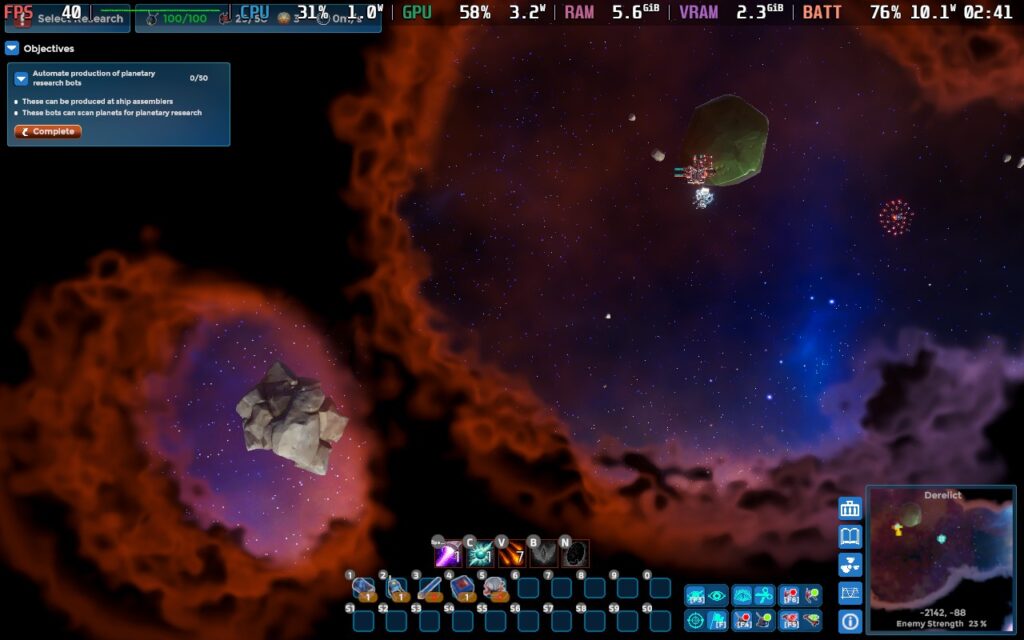
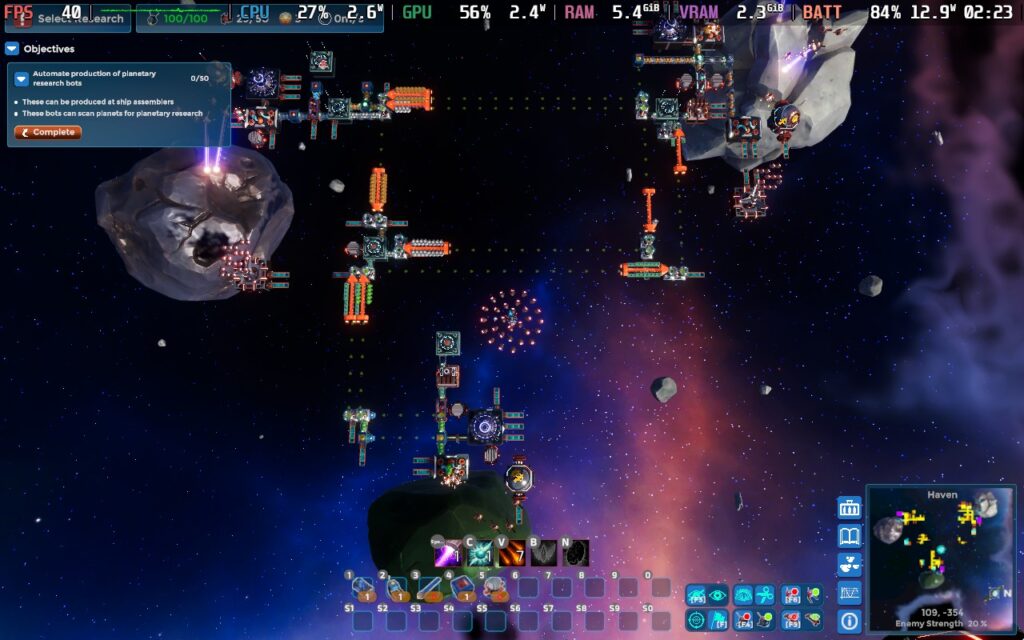
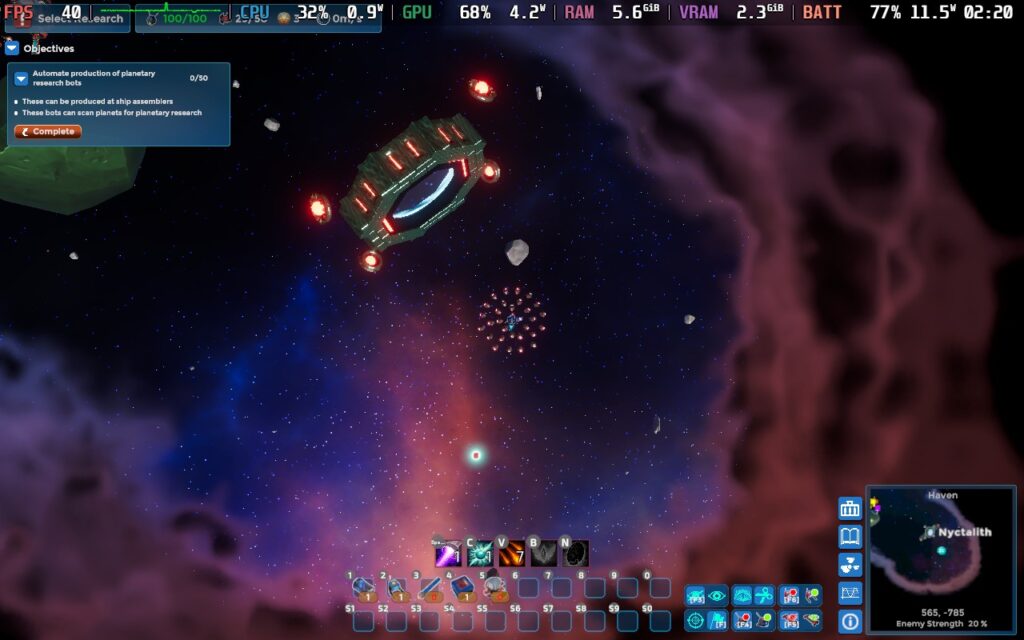
The game does suffer from stutters at times. This is unavoidable, regardless of the TDP limit, and I imagine it's probably to do with a sudden CPU spike. However, as Final Factory isn't very action-oriented, I feel like the game still feels playable as far as performance goes.
Battery drain can vary quite a bit, Final Factory seems to quite effectively cull objects that are out of view, even cutting down on how CPU-intensive factories are when they are off-screen, therefore I generally found the battery drain to be about 11W when in quiet areas, and going up to 15W in busy areas. So, on a Steam Deck LCD, you should expect around 2.5 hours of battery life, maybe 3 hours in a pinch. Steam Deck OLED players can expect at least 3 hours of battery life, likely 3.5 hours.
Final Factory offers subtitles, UI scaling, which we've already covered earlier in the article, and the ability to "disable skybox motion," which stops the background in the game from moving. The movement is very slow and almost imperceptible, but it must have bothered some for it to be an option. You can also remap the controls.
That's it as far as accessibility is concerned.
Final Factory is for a specific set of people. Those who enjoy painstakingly planning out their stations so that they can have a smooth-running logistical operation will probably love Final Factory. Planning and logic are an absolute necessity rather than a nice-to-have here.
The gameplay outside of the factory building does fall a little flat. Combat is mostly non-interactive, with your defense platforms and your fleet taking care of it. So, as long as your factory automates the production of combat craft, you probably don't have to fight yourself actively ever. As you would expect, all mining, research, and crafting will eventually be automated.
Story-wise, I'm not sure how much is going on here. It's vague, although I think we're the bad guys, much like Factorio. We aim to exploit the system of its resources while the native inhabitants fight back. The ancient aliens who left the artifacts in space seem to be on your side, but again, it is hard to say if they were good or evil.
Final Factory will be enjoyable to those who love Factorio, as it plays very similarly in its gameplay mechanics, so if you want to dive into another game in a similar vein but with a different atmosphere and a few alterations, Final Factory might be the game for you. If you disliked Factorio and how much it taxed your brain, Final Factory is no different, so you might want to steer clear! I wasn't a huge fan of Factorio, so that's reflected in me giving the game 3.5/5, but I think there's a solid game here if you're into that kind of thing.
Performance on the Steam Deck is acceptable. Even with a fairly large factory, maintaining 30 FPS is attainable despite occasional stutters. The main issue is the UI scaling, as some text is genuinely hard to read, and the controls are also a little confusing to get used to at first.
Our review is based on the PC version of this game.
If you enjoyed this review, be sure to check out the rest of the content on SteamDeckHQ! We have a wide variety of game reviews and news that are sure to help your gaming experience. Whether you're looking for news, tips and tutorials, game settings and reviews, or just want to stay up-to-date on the latest trends, we've got your back.
Final Factory will be of interest for fans of Factorio, despite some issues with controls and UI scaling on the Steam Deck.
